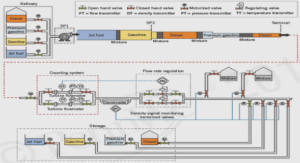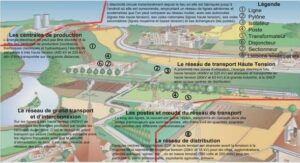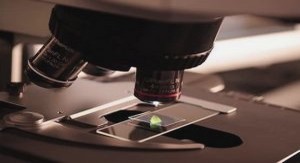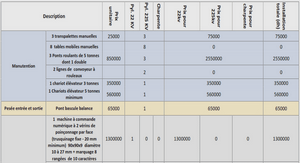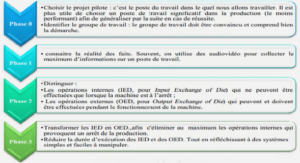Cours establishment microsite of white-cedar seedlings, tutoriel & guide de travaux pratiques en pdf.
Sapling density
The effect of canopy treatments was significant for maple sapling density (table 5). Density of maple saplings increased significantly with harvesting intensity. In high intensity selection cutting, the density of small maple saplings was nearly five times higher than in the control (mean = 1167 and 233 stems/ha respectively). The same result was not observed for the density of yellow birch and white-cedar saplings. Significant differences were observed only between DBH classes and there was no significant interaction between DBH classes and treatments for all species. Basal area in seed trees in the plot are significant for maple and yellow birch but not for white-cedar. For those two species, sapling density increased with the basal area. The results showed a slight increase of white-cedar sapling density with the year of cut. Plots that have been harvested in 1995 showed higher saplings density than the others. Analysis showed the same results for yellow birch seedlings and saplings densities concerning the ecological regions. Plots in ecological region 3b had a lower abundance of sapling compared to ecological regions 3a and 4b.
Establishment microsite of white-cedar seedlings
Relative frequency of microtopography types at the subplot center showed only 8% of mounds available (table 6a). However, more than 20% of the small seedlings were found on mounds (figure 10a). Medium and large seedlings followed the pattern of site availability for microtopography types (table 6a). Important differences were found when the proportion of white-cedar seedlings in a given height class were compared to litter type availability (table 6b). The relative frequency of all height classes of white-cedar seedlings were proportionally higher on decaying wood than on all other substrates when compared to the litter type availability (control), especially for small seedlings (figure 10b). Hardwood litter was the most available substrate but was proportionally less used by white-cedar seedlings (table 6b).
Discussion
Results showed that white-cedar seedlings can be regenerated by operational scale selection cutting. White-cedar seedlings were present in all plots independently of the canopy treatment. However, operational scale selection cutting generated a very important variation in harvesting intensity. At the plot level, basal area harvested varied between 10 and 58%. Consequently, this has certainly created an important gradient of light availability in residual stands (Palik et al. 1997, Beaudet et al. 2011). This heterogeneous light environment likely contributed to the observed variation of the white-cedar seedlings abundance between height classes.
Abundance of seed trees is an important criteria for the establishment of white-cedar seedlings. The results obtained confirm our hypothesis. Abundance of white-cedar seedlings increase with the residual basal area of white-cedar in the plot. Seed tree abundance is even more important because the seed dispersal distance of white-cedar is relatively short, around 60 meters (Rooney et al. 2002). Also, seed viability on the forest floor is very short (less than one year) and hence, there is no white-cedar seed bank in the soil (Johnston 1990; Béland et al. 2013). Thus, without seed trees in the stand, the establishment of white-cedar seedlings is compromised. Approaches using low intensity selection cutting like single-tree selection cutting could favor the conservation of seed trees in the stand for many decades, allowing the progressive build-up of the seedling bank, despite the lower competitively of cedar over other species (Miller 1992; Schaffer 1996; Cornett et al. 1997; Asselin et al. 2001 Rooney et al. 2002). The abundance of seed trees was also significant for maple but not for yellow birch. The fact that yellow birch seeds can disperse over a longer distance may explain that the presence of regeneration was not directly related to the presence of seed trees in the plot. Maple, like white-cedar, also has a relatively short seed dispersal distance that explains the close relation between the presence of seed trees in the plots and the abundance of seedlings.
The light requirements of white-cedar seedlings are not the same for the establishment and for the growth of established seedlings (Larouche et al. 2011). White-cedar seedlings need 11 to 13 years to reach 30 cm height and another 8 to 20 more years to reach more than 1 meter (Larouche 2009). Fifteen to 19 years after harvesting activities, the majority of the white-cedar seedlings were classified has medium seedlings, between 30 and 100 cm tall. The highest abundance of white-cedar seedlings, all height classes combined, was observed in the low intensity selection cutting. In this canopy treatment, partial shading maintains temperature and soil moisture at a suitable level for seedlings survival (Raymond et al. 2013). In fact, treatments with a canopy cover are more suitable for early survival of white-cedar seedlings than treatments with full sunlight conditions (Larouche et al. 2011). In the control, abundances of medium and large seedlings of all studied species were lower than in all other canopy treatments. These results confirm that available light had a positive influence on seedling height growth. However, in this study, abundance of large seedlings were not significantly higher in the medium and high intensity selection cutting than in the low intensity selection cutting for the white-cedar. As no regeneration inventory was carried out before harvesting activities, it is difficult to know whether seedlings were already established. Thus, if the pre-established regeneration was scarce and small as in the control or if there was no pre-established regeneration, it is not surprising that the effects of treatments on the saplings number are not significant. Moreover, this lower abundance of white-cedar large seedlings and saplings can be explained by the presence of more competition by other species in treatments with higher harvesting intensity.
